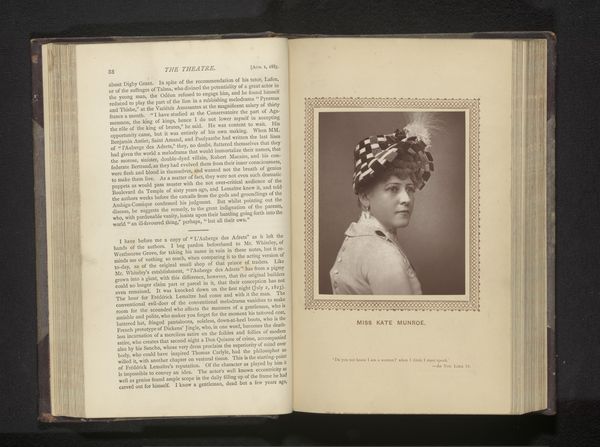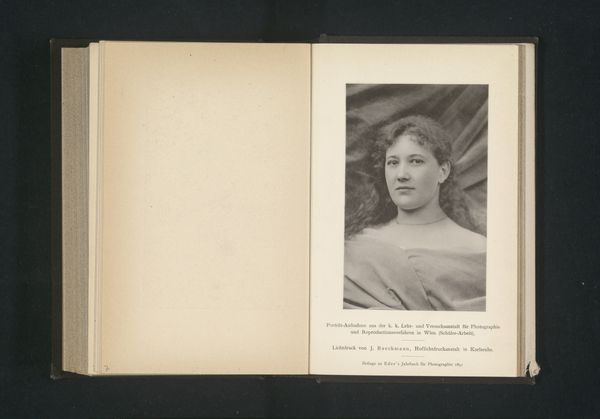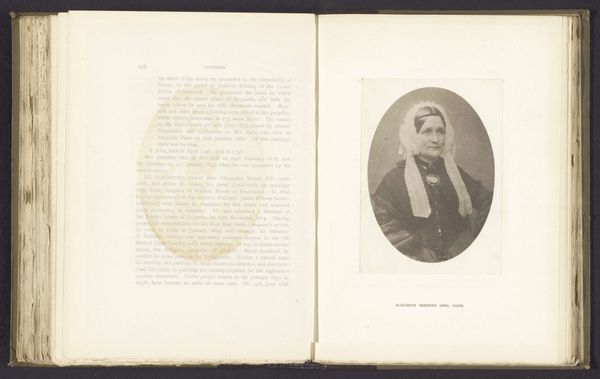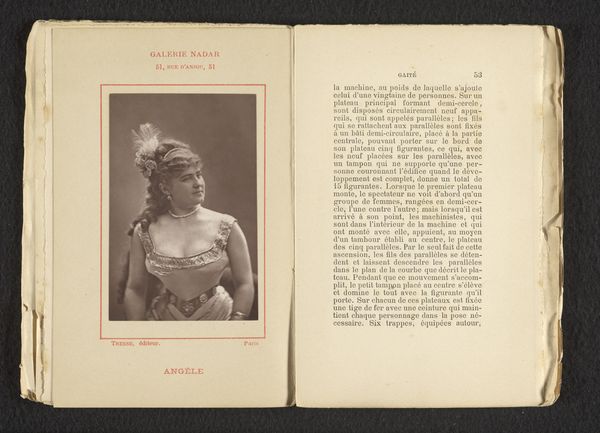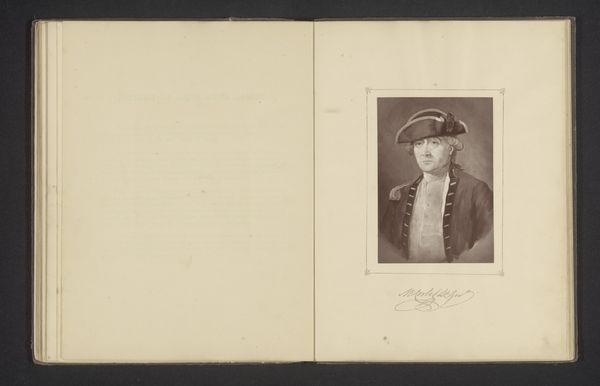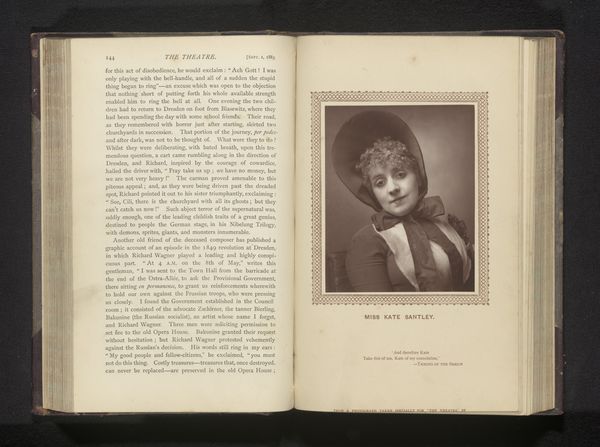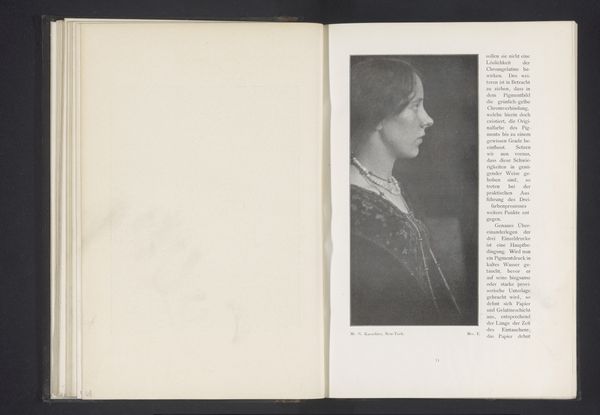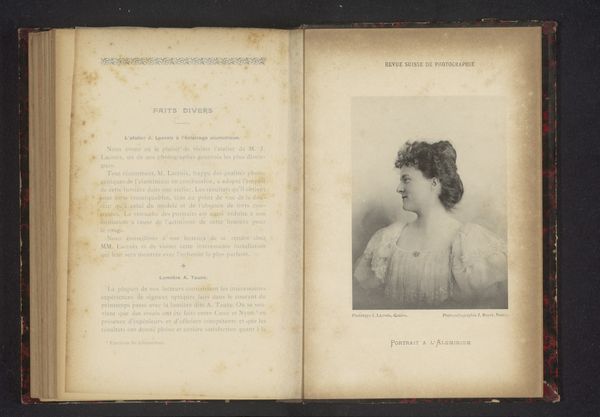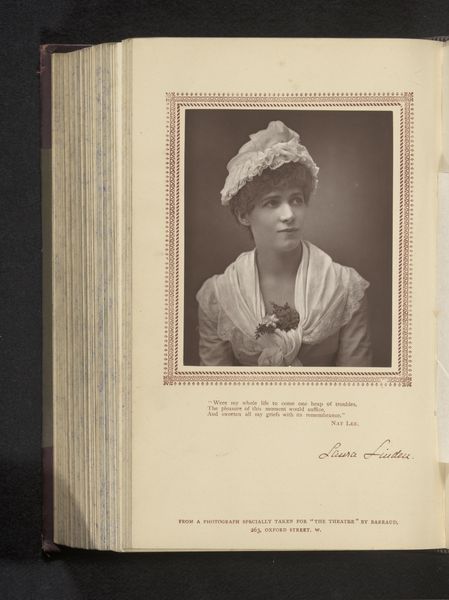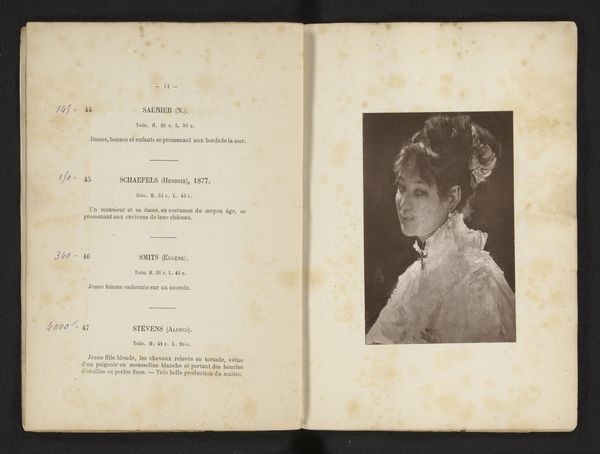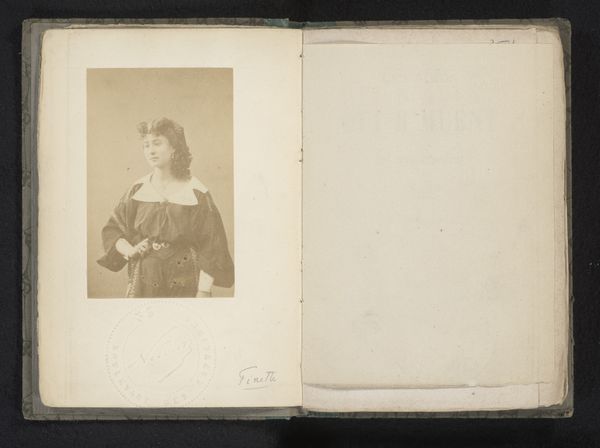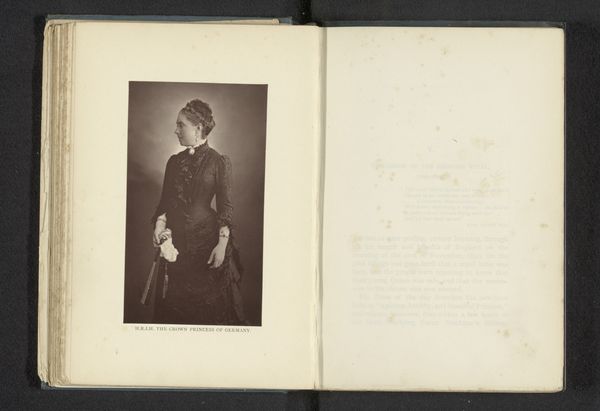
photography
#
portrait
#
photography
Dimensions: height 117 mm, width 88 mm
Copyright: Rijks Museum: Open Domain
Editor: So, we have before us "Portret van Lizzie Webster", an undated photograph, but likely before 1894, by Alfred Ellis. It’s quite striking how much texture you get from a photograph of this period. I mean, just look at the detailing in the lace collar and velvet jacket! What stands out to you in terms of materials and the photographic process? Curator: Considering photography's rise within a burgeoning consumer culture at the fin de siècle, this piece presents a complex interplay between technological advancement, social status, and material presentation. What's particularly fascinating to me is the deliberate emphasis on surface textures through photography. This piece almost mimics painting with its dramatic shadow play, yet it is using modern means. What do you think this contrast achieves? Editor: Well, perhaps it’s about making photography acceptable in the art world, by showing that a machine can be as expressive as a painter's brush, maybe elevating a "low" material by manipulating light and shadow in this manner. And of course the subject’s dress – the velvet and lace – they’re all part of displaying her status, manufactured through photography, for mass consumption, is that correct? Curator: Precisely. And Ellis, as the photographer, plays a role here too, since he had a studio with various material means, and techniques that shape this image. Was Lizzie Webster a subject of consumption through photographic print? Absolutely. But this object itself - its physical qualities: paper, binding - were products and commodities as well. We have to consider where this object eventually lived and what role that played in it's construction. Do you see any limitations to this materialistic approach? Editor: I suppose it could overlook individual intentions of both the photographer and subject. Focus is heavily placed on its commodification. Curator: That's an interesting point, and one that needs critical attention, certainly. However, I find this approach beneficial since it reminds us of the social forces at play and the industrial infrastructure surrounding the seemingly simple act of image making. We can all come away with a far more tangible idea as to how the world made the image, but how the image also constructed its world.
Comments
No comments
Be the first to comment and join the conversation on the ultimate creative platform.
